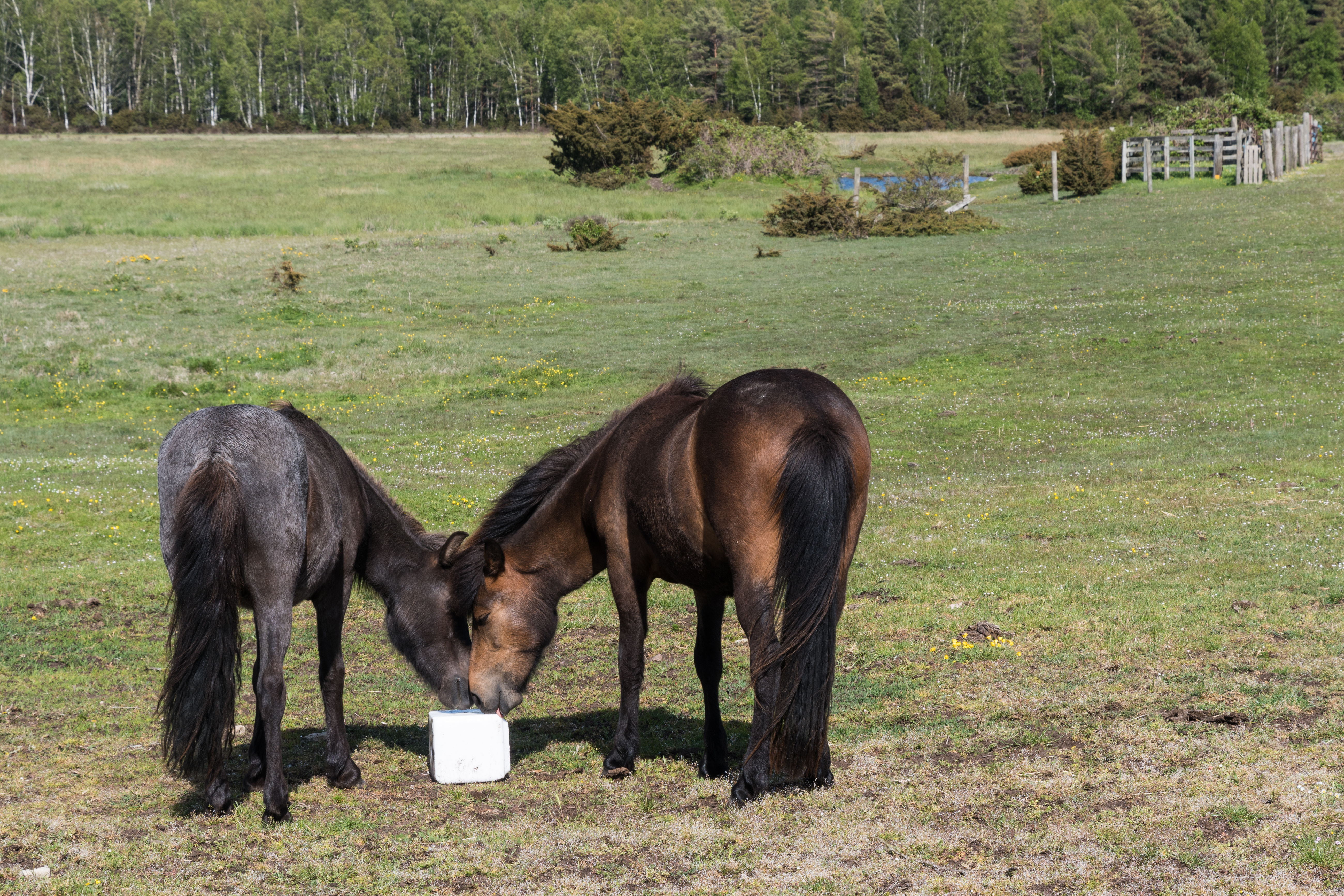Home > Horse Care > Why horses need salt
Why horses need salt
- March 27, 2025
- ⎯ Christine Barakat with Melinda Freckleton, DVM
In addition to shade and a source of fresh water, every summer turnout space needs to have a salt block. Horses lose large amounts of the essential mineral in their sweat, and if it’s not replenished, an electrolyte imbalance may develop, leading to low blood pressure or even neurological or cardiovascular problems.

For most horses, a shared salt block in a turnout space is sufficient; herd members will take turns licking it as needed.
The type of salt block you provide—plain, mineralized or a fancy, imported variety—isn’t as important as the fact that it’s available. It is critical, however, that you only purchase salt blocks specifically labeled for horses. Those intended for other species, such as cattle, might contain additives or nutrients that are unsafe for horses.
You can also provide salt blocks in individual stalls, but avoid putting them directly into feed tubs. This can result in overly salty feed that the horse is unwilling to eat or the entrapment of moist feed under the block that then molders in the summer heat. Instead, use a smooth-edged salt block holder, securely mounted on a stall wall.
If a horse is working very hard in hot weather, he may need additional salt in the form of an electrolyte paste or powder. Your veterinarian can help you determine if your horse needs additional salt, as well as the best method for providing it.
This article first appeared in EQUUS #378
Don’t miss out! With the free weekly EQUUS newsletter, you’ll get the latest horse health information delivered right to your in basket! If you’re not already receiving the EQUUS newsletter, click here to sign up. It’s *free*!





